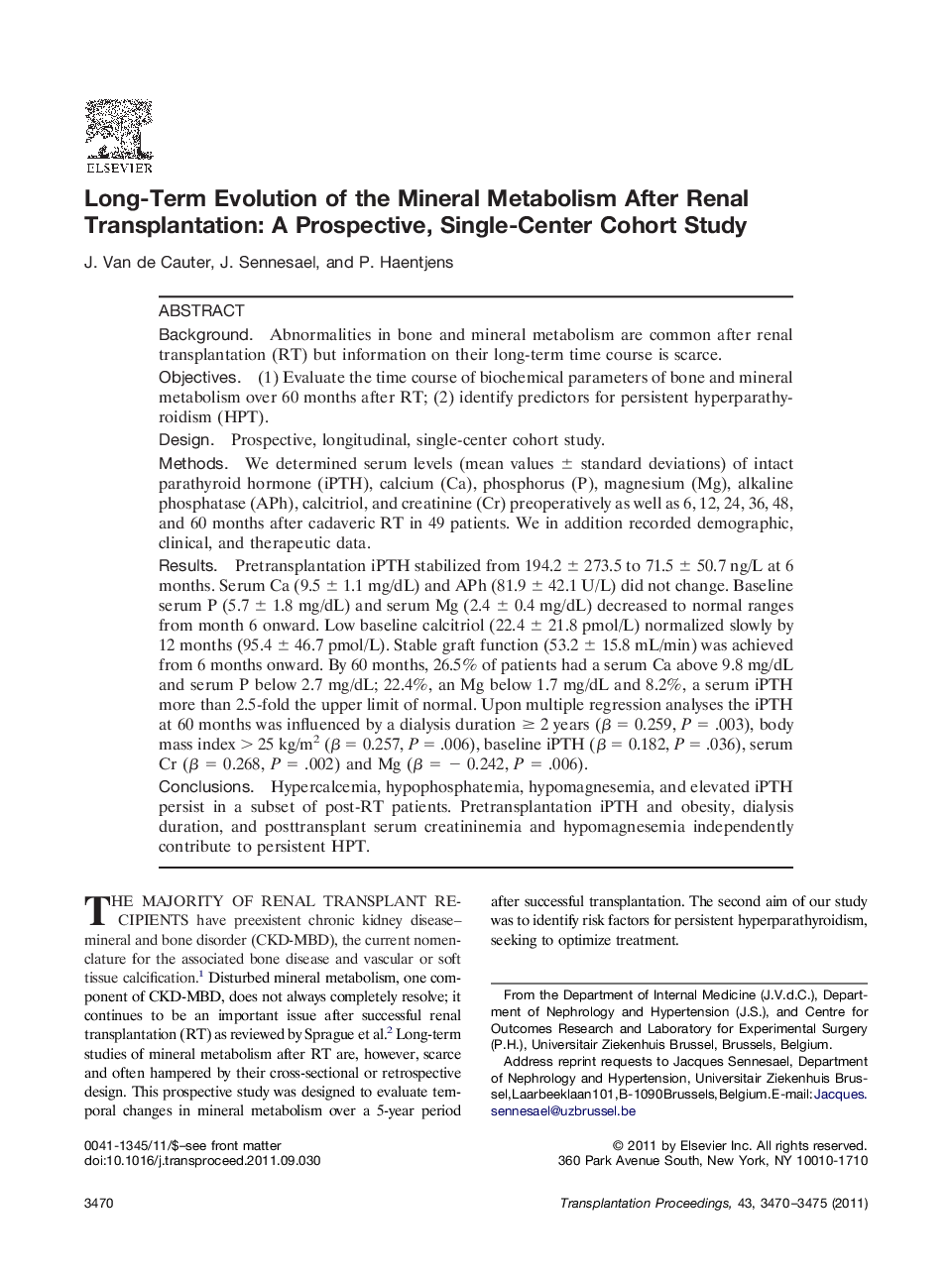| Article ID | Journal | Published Year | Pages | File Type |
|---|---|---|---|---|
| 4258623 | Transplantation Proceedings | 2011 | 6 Pages |
BackgroundAbnormalities in bone and mineral metabolism are common after renal transplantation (RT) but information on their long-term time course is scarce.Objectives(1) Evaluate the time course of biochemical parameters of bone and mineral metabolism over 60 months after RT; (2) identify predictors for persistent hyperparathyroidism (HPT).DesignProspective, longitudinal, single-center cohort study.MethodsWe determined serum levels (mean values ± standard deviations) of intact parathyroid hormone (iPTH), calcium (Ca), phosphorus (P), magnesium (Mg), alkaline phosphatase (APh), calcitriol, and creatinine (Cr) preoperatively as well as 6, 12, 24, 36, 48, and 60 months after cadaveric RT in 49 patients. We in addition recorded demographic, clinical, and therapeutic data.ResultsPretransplantation iPTH stabilized from 194.2 ± 273.5 to 71.5 ± 50.7 ng/L at 6 months. Serum Ca (9.5 ± 1.1 mg/dL) and APh (81.9 ± 42.1 U/L) did not change. Baseline serum P (5.7 ± 1.8 mg/dL) and serum Mg (2.4 ± 0.4 mg/dL) decreased to normal ranges from month 6 onward. Low baseline calcitriol (22.4 ± 21.8 pmol/L) normalized slowly by 12 months (95.4 ± 46.7 pmol/L). Stable graft function (53.2 ± 15.8 mL/min) was achieved from 6 months onward. By 60 months, 26.5% of patients had a serum Ca above 9.8 mg/dL and serum P below 2.7 mg/dL; 22.4%, an Mg below 1.7 mg/dL and 8.2%, a serum iPTH more than 2.5-fold the upper limit of normal. Upon multiple regression analyses the iPTH at 60 months was influenced by a dialysis duration ≥ 2 years (β = 0.259, P = .003), body mass index > 25 kg/m2 (β = 0.257, P = .006), baseline iPTH (β = 0.182, P = .036), serum Cr (β = 0.268, P = .002) and Mg (β = − 0.242, P = .006).ConclusionsHypercalcemia, hypophosphatemia, hypomagnesemia, and elevated iPTH persist in a subset of post-RT patients. Pretransplantation iPTH and obesity, dialysis duration, and posttransplant serum creatininemia and hypomagnesemia independently contribute to persistent HPT.
